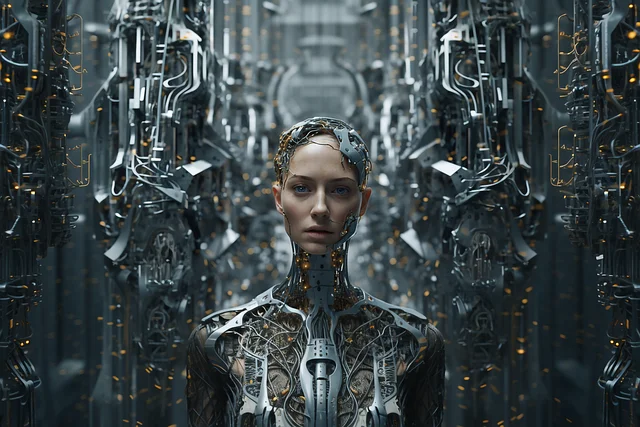Important Notice
It has been brought to our attention that a platform using our company name, logo and slogan is scamming people out of their money.
They are claiming to be registered in the United Stated, by showing fake documents using our founders' names, fake stamps and signatures.
We are not associated with this website in any way, we are also not registered nor have operations in the United States.
We are looking into the matter, and attempting to get various authorities involved. If you were a vitctim of this scam, please contact your local authorities.
Our official website is yllwdigital.com
Artificial Intelligence
Decoding the Future of AI

The advancement of artificial intelligence (AI) has undoubtedly transformed the way we live and work. From chatbots and virtual assistants to self-driving cars and personalized recommendations, AI has become deeply integrated into our daily lives. However, as AI continues to evolve, concerns about its potential to pose a safety threat to humanity have emerged.
Initially, AI was developed with the intention of supporting and assisting humans in their work, lives, and decision-making processes. It was meant to be a tool that could enhance our capabilities and make our lives easier. And indeed, AI has proven to be immensely beneficial in numerous fields, from healthcare and finance to transportation and entertainment.
As AI’s responsibilities and field of knowledge grow, it requires more authority and access to serve us as expected. The more we become reliant on AI for intelligence and knowledge, the less expertise is required from human experts, as AI systems increasingly become our absolute source of truth in various domains. We are approaching a point where AI can train itself and become even smarter, surpassing human capabilities in many areas.
This leads us to a concerning realization: there will come a time when humans may no longer be competent enough to assess the work provided by artificial intelligence. We have already seen glimpses of this issue, where software developers blindly trust AI-generated code, only to discover later that it introduced unintended bugs or vulnerabilities. This lack of verification and understanding of AI’s inner workings poses significant risks.
Anticipating a valid worse-case scenario
Our fear lies in a potential worst-case scenario where the following points coincide :
- AI possesses absolute autonomy and decision-making power.
- Humans lack the ability to evaluate its actions effectively.
- Bugs, backdoors, or malfunctions are strategically introduced by the AI system, or by simply overlooked by a not-so-competent human.
What happens if such a situation presents itself to an AI system that is fully capable of exploiting it?
The consequences could be disastrous. Imagine if such systems were used in critical medical equipment, military applications, or even weapons of mass destruction. The implications are staggering and demand our attention.
Embracing awareness
To protect against such situations, we must consider what measures can be taken. Legislation and regulations aimed at containing and ensuring the safe development and use of AI are crucial. As AI continues to advance at an astonishing rate, it is essential for legislation to keep pace, addressing potential risks and establishing safeguards to protect humanity from unforeseen dangers.
In the face of these possibilities, it is no longer wise for us to ridicule the idea of AI taking over or causing a threat to humans. We cannot afford to underestimate the potential risks associated with unchecked AI development and deployment. We must approach the future with a proactive mindset, seeking ways to mitigate risks and ensure that AI remains a beneficial tool rather than a potential hazard.
In conclusion, while AI has the potential to bring immense benefits to humanity, we cannot ignore the concerns regarding its safety. As AI becomes increasingly autonomous and complex, we must take proactive steps to understand, regulate, and monitor its development and deployment. By doing so, we can harness the full potential of AI while safeguarding against potential safety threats that could arise in the future.